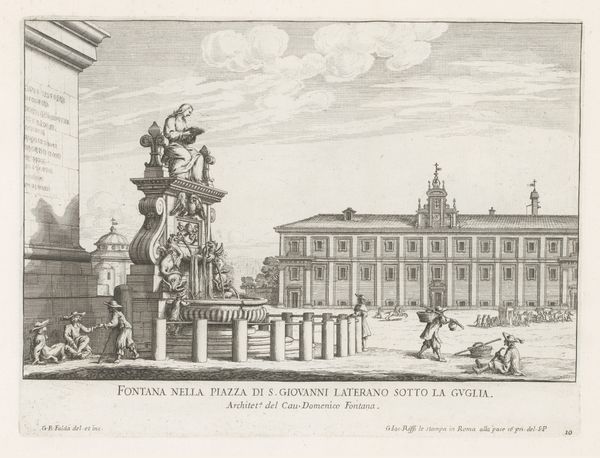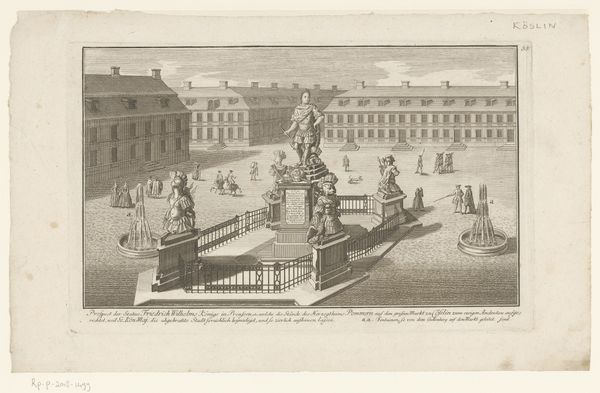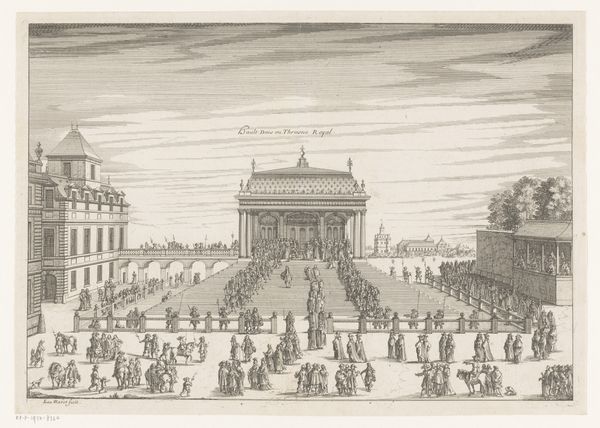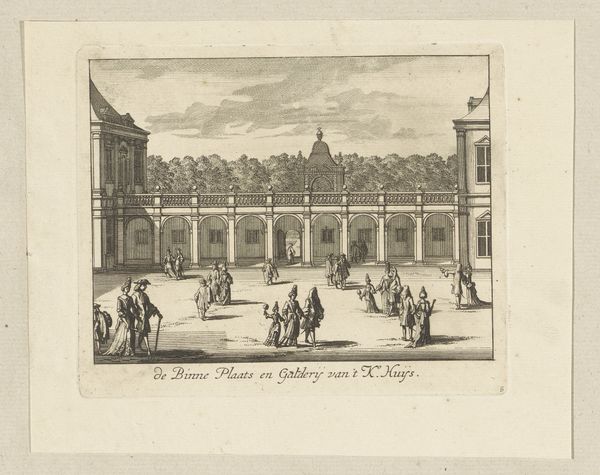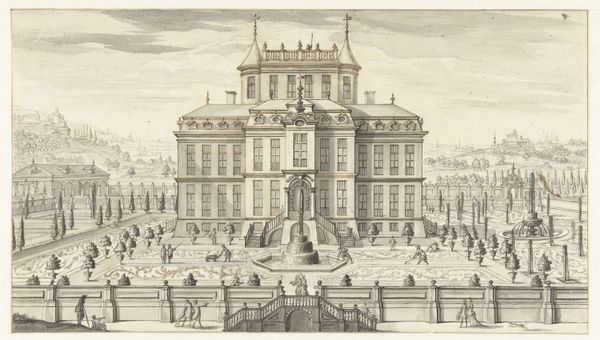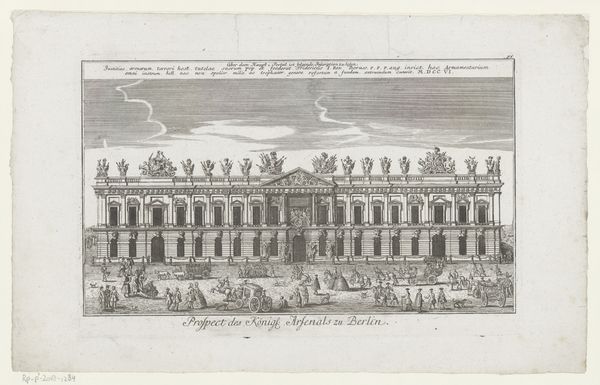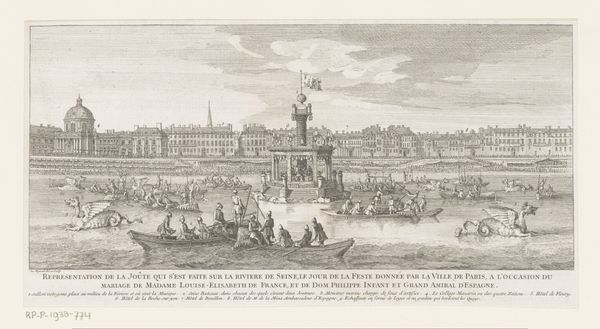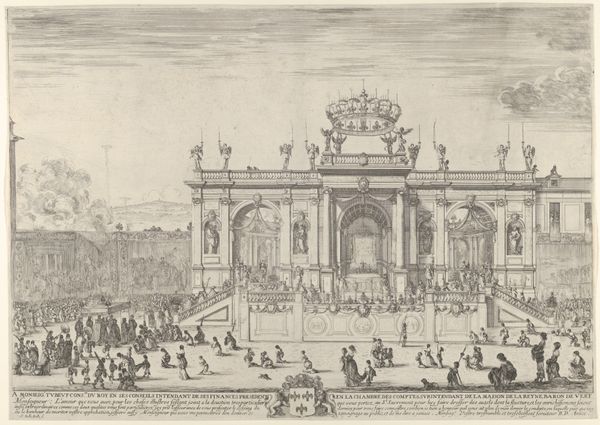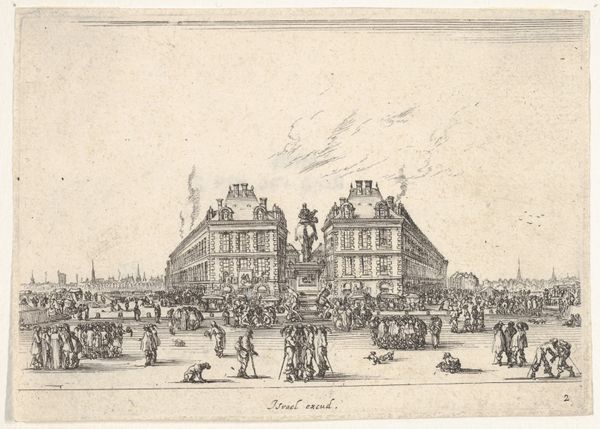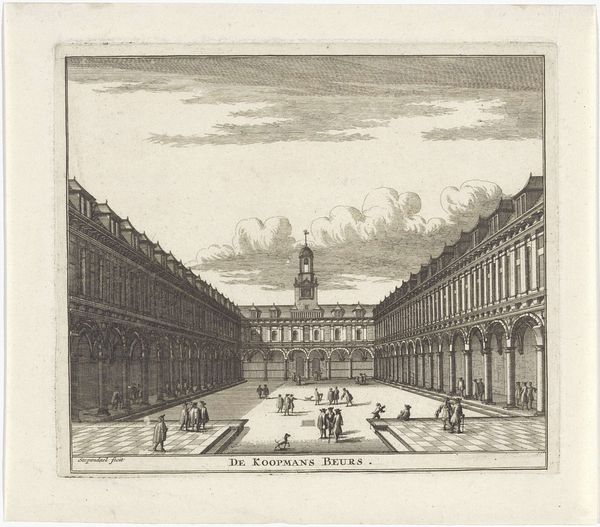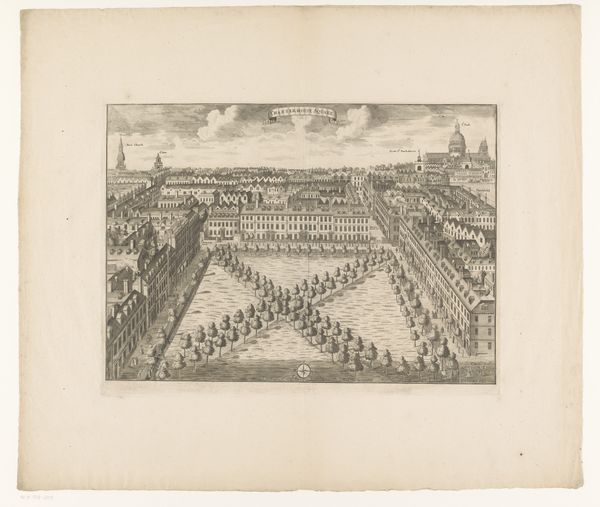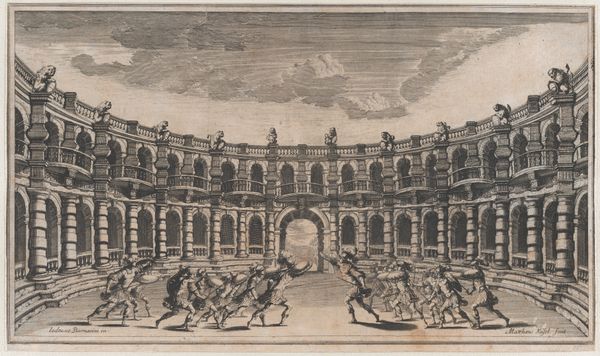
Plate 3: La Place Royale, equestrian statue of Louis XIII in profile facing the left in center, various horsemen and figures in background, from 'Various Figures' (Agréable diversité de figures) 1642
0:00
0:00
drawing, print, etching
#
drawing
#
baroque
# print
#
etching
#
landscape
#
horse
#
cityscape
#
history-painting
#
building
Dimensions: Sheet: 2 3/4 × 4 3/16 in. (7 × 10.7 cm)
Copyright: Public Domain
Editor: This is Stefano della Bella’s "Plate 3: La Place Royale, equestrian statue of Louis XIII…” from 1642, an etching of a public square teeming with figures. The detail achieved through etching is fascinating; it really captures the energy of the bustling square. What strikes you about this piece? Curator: It’s compelling to consider the means of production here, isn't it? Etching allowed for relatively easy reproduction. How did this accessibility impact the circulation of images of power and urban spaces in 17th-century France? Was this image intended for an elite audience or something broader? The very materiality of the print suggests a wider consumption than, say, a unique oil painting. Editor: That's a good point; it feels almost like propaganda in a way, making the king accessible to more people through repeated images. So, you’re saying the physical act of creating prints democratized the image, but what about the laborers involved? Did Bella create all the prints, or would assistants reproduce the images? Curator: Exactly. The etching medium certainly allowed for mass production of these prints, making the royal image more pervasive. Furthermore, think about the labor required. Who were these skilled artisans involved in each stage—preparing the plates, printing, distributing? Their labor and their social status would be interesting to examine. Also, where would ordinary people see a print like this? Editor: Maybe prints like this helped the growing merchant class keep up with court life? I'd assumed this kind of print was made by the artist alone, but mass production introduces many factors I hadn't thought of! Curator: Precisely! Examining this print through the lens of production and consumption offers a rich understanding of 17th-century society, far beyond just the depiction of royalty. We tend to look at the art and the artist. But how revolutionary that art also required laborers?
Comments
No comments
Be the first to comment and join the conversation on the ultimate creative platform.
